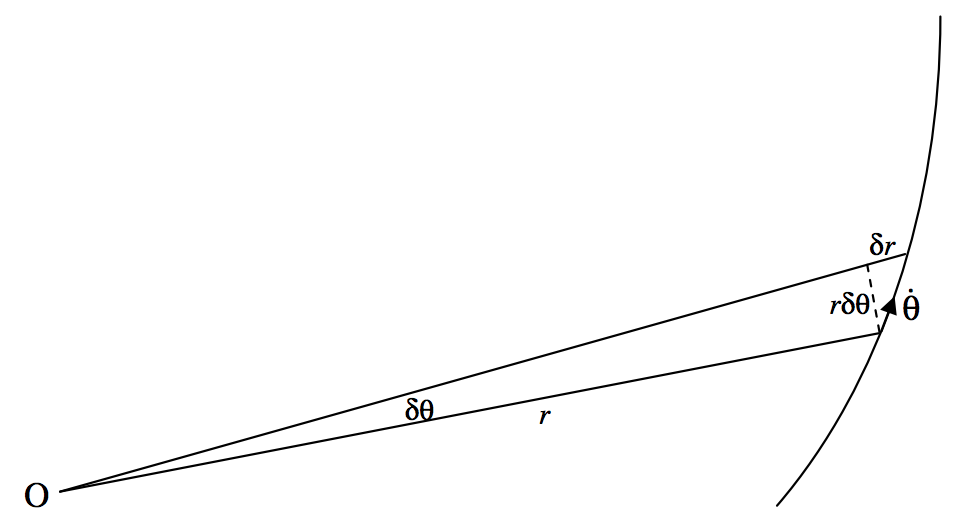9.2: Kepler's Second Law from Conservation of Angular Momentum
( \newcommand{\kernel}{\mathrm{null}\,}\)

FIGURE IX.1
In figure IX.1, a particle of mass m is moving in some sort of trajectory in which the only force on it is directed towards or away from the point O. At some time, its polar coordinates are (r,θ). At a time δt later these coordinates have increased by δr and δθ.
Using the formula one half base times height for the area of a triangle, we see that the area swept out by the radius vector is approximately
δA=12r2δθ+12rδθδr.
On dividing both sides by δt and taking the limit as δt→0, we see that the rate at which the radius vector sweeps out area is
˙A=12r2˙θ.
But the angular momentum is , mr2˙θ and since this is constant, the areal speed is also constant. The areal speed, in fact, is half the angular momentum per unit mass.


